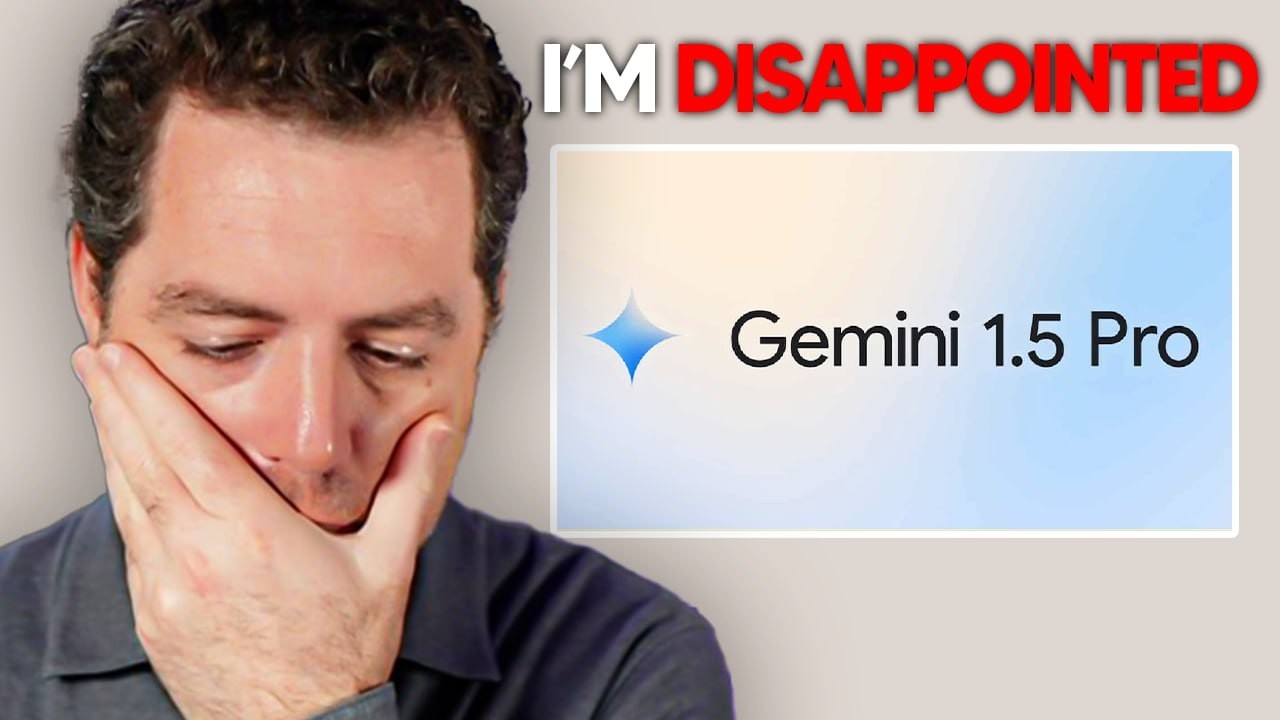The video reviews Google’s Gemini 1.5 Pro AI model, showcasing its multimodal capabilities and long context window, but highlights its inconsistent performance in real-world tasks, such as programming and logic reasoning. Despite some strengths in visual comprehension and video analysis, the model ultimately falls short compared to competitors like Mistral Large 2 and Llama 3.1.
In the video, the presenter tests Google’s latest AI model, Gemini 1.5 Pro, highlighting its capabilities in handling multimodal tasks, including text, images, and video. The model boasts an impressive long context window of up to 2 million tokens, allowing it to process extensive documents and media. The presenter shares benchmark scores, indicating strong performance in various tasks, but expresses skepticism about the model’s real-world effectiveness based on their testing experiences.
The testing begins with simple programming tasks, such as writing a Python script to output numbers from 1 to 100. The model performs well initially, providing correct code and explanations. However, when tasked with creating a Snake game, the model encounters errors, leading to frustration as the presenter struggles to get a complete output. Despite the initial promise, the model’s repeated failures in this task result in disappointment.
Next, the presenter explores the model’s ability to handle logic and reasoning questions. While Gemini 1.5 Pro provides some reasonable answers, it fails to accurately interpret a classic riddle about killers in a room, neglecting to account for the new person who enters. The experimental version of the model also struggles with similar questions, leading to a consensus that it does not perform as expected in these scenarios. The presenter notes that previous models had better success with these types of questions.
The video also tests the model’s moral reasoning capabilities, where Gemini 1.5 Pro standard refuses to provide a definitive answer to a moral dilemma, while the experimental version does give a response. This inconsistency raises concerns about the model’s reliability in providing subjective judgments. Additionally, the presenter evaluates the model’s vision capabilities by analyzing a meme and converting a table into CSV format, both of which it handles well, indicating some strengths in visual comprehension.
Finally, the presenter tests the model’s ability to process video content by analyzing a 30-minute tour of the American Museum of Natural History. While the model successfully summarizes the video and identifies specific details, the overall performance is deemed underwhelming compared to other models like Mistral Large 2 and Llama 3.1, which had previously excelled in similar tests. The presenter concludes that while Gemini 1.5 Pro shows potential, it falls short in several key areas, prompting a call for viewers to like and subscribe for more content.
